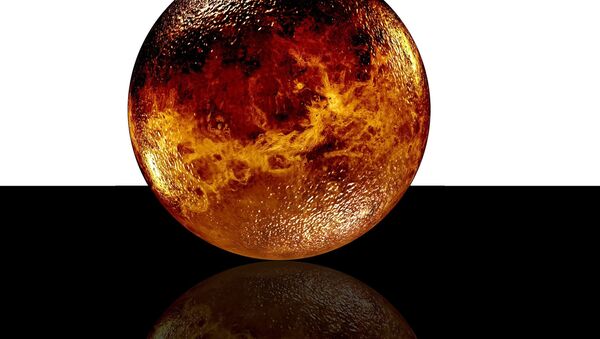"Venus looks bland and featureless in visible light, but change the filter to ultraviolet, and Earth's twin suddenly looks like a different planet," NASA said in a statement. "Dark and light areas stripe the sphere, indicating that something is absorbing ultraviolet wavelengths in the planet's cloud tops."
The really strange part is that visible light is reflected by Venus' atmosphere, not absorbed by it. Venus is choked by extremely dense clouds of gaseous sulfuric acid that reflect visible light, which makes the planet difficult to observe with conventional telescopes. Amateur astronomers who find Venus in the night sky are often disappointed to learn that the planet appears as a featureless white dot to the naked eye.
However, why Venus has such a strange interaction with ultraviolet light remains a mystery. Enter the Cubesat Ultraviolet Experiment (CUVE): a NASA Goddard Spaceflight Center project intended to send a small satellite into orbit around Venus with an ultraviolet camera, among other instruments, for a closer examination of the planet's unique atmosphere. CUVE also has a spectrometer to analyze ultraviolet and visible light over Venus.
A 2007 study of Venus' clouds that was published in the journal Nature found that the movements of the sulfuric clouds could best be seen through the use of an ultraviolet telescope. One theory for this is that an ultraviolet-absorbing material forms beneath the planet's atmosphere and is dredged to the top by the movements of the clouds.
"Since the maximum absorption of solar energy by Venus occurs in the ultraviolet [part of the spectrum], determining the nature, concentration and distribution of the unknown absorber is fundamental," CUVE Principal Investigator Valeria Cottini said in the statement. "This is a highly-focused mission — perfect for a CubeSat application."
While NASA has sent numerous missions to Venus in the 1970s, it has been decades since a spacecraft has orbited "Earth's Twin." The most recent was the Soviet Union's Venera 16 probe in 1983, sent on a mapping mission of the northern hemisphere. It will take CUVE about 18 months to arrive at Venus, at which point it will spend about six months studying the Venusian atmosphere.
The CubeSat is a miniature satellite that is about four inches in length and weighs less than three pounds, and is highly modular in purpose. They can be combined into a larger satellite and modified to test new technologies.
"A lot of these concepts are driven by important Goddard research-and-development investments," said Tilak Hewagama, a CUVE team member who worked on the spectrometer, in a statement. "That's what got us started."
Venus is the second-closest planet to Earth (after Mars, which over 100 million miles closer to Earth) but its atmosphere has made observation of it difficult. Astronomers believe that a runaway greenhouse effect (where heat is trapped between the planet's surface and the atmosphere, increasing temperatures) has transformed Venus into a scorching hot and highly inhospitable wasteland.






